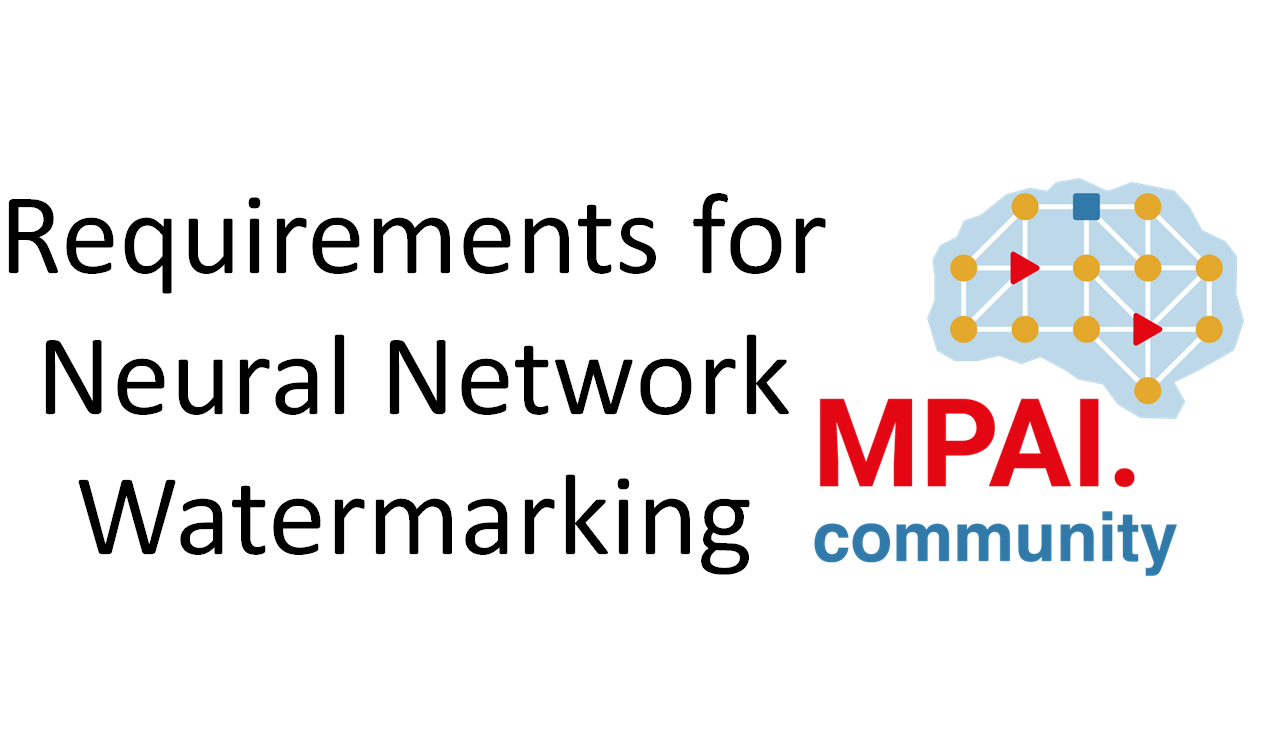Introduction
Research efforts, specific skills, training and processing can cumulatively bring the development costs of a neural network anywhere from a few thousand to a few hundreds of thousand dollars. Therefore, the AI industry needs a technology to ensure traceability and integrity not only of a neural network but also of the content generated by it (so-called inference).
Faced with a similar problem, the digital content production and distribution industry has considered watermarking as a tool to insert a payload carrying data such as timestamping or owner ID information. If the inserted payload is imperceptible and persistent, it can be used to signal the ownership of a content item or the semantic modification of its content.
A role for MPAI?
MPAI has assessed that watermarking can also be used by the AI industry and intends to develop a standard to assess the performance of neural network watermarking technologies. Users with different applications in mind can be interested in neural network watermarking. For instance, the owner, i.e., the developer of a neural network, is interested in having their neural network protected by the “best” watermarking solution. The watermarking provider, i.e., the developer of the watermarking technology, is interested in evaluating the performance of their watermarking technology. In its turn, the customer, i.e., the provider of an end product needs the owner’s and watermarking provider’s solution to offer a product or a service. Finally, the end-user buys or rents the product and uses it.
All these users are mainly interested in three neural network watermarking properties: imperceptibility, persistency, and computational complexity.
Neural network watermarking imperceptibility
One of the features that a user of a watermarking technology may be interested in is assessing the impact that the embedding of a watermark in a neural network has on the quality of the inference that the neural network provides.
MPAI has identified the following process to test imperceptibility:
- Select a pair of training and testing datasets and a set of M unwatermarked neural networks.
- Insert a watermark in each neural network with D different data payloads, yielding M x (D + 1) neural networks: M x D watermarked neural networks and M unwatermarked neural networks.
- Feed the M x (D + 1) neural networks with the testing dataset and measure the quality of the produced inference.
Neural network watermarking persistence
One of the features that a user of a watermarking technology may be interested in is assessing the capability of the detector to ascertain the presence of the watermark and the capability of the decoder to retrieve from a modified version of the neural network.
MPAI has identified the following process to test the capability of the detector to find the watermark in the neural network:
- Repeat step 1 above.
- Repeat step 2 above.
- Repeat step 3 above.
- Apply one of the modifications (to be specified by the standard), with the goal to alter the watermark. Each modification must be characterised by a set of parameters that will challenge the robustness of the watermark.
- Feed the M x (D + 1) neural networks to the detector and record the decision –“watermark present” or “watermark absent”.
- Mark the results as true positive, true negative, false positive (false alarm) and false negative (missed detection).
The process to test the capability of the decoder to retrieve the payload in the neural network requires similar steps as above where “presence and absence” is replaced by “distance between the retrieved payload and the original payload”.
The computational cost
One of the features that a user of a watermarking technology may be interested in is evaluating the processing cost of a watermarking solution (in terms of computing resources and/or time).
The MPAI Call for Technologies
The MPAI process is to develop Use Cases and Functional Requirements, issue Calls for Technologies, receive and assess responses to the Call, and develop a standard for assessing the performance of a neural network watermarking technology. The published document can be found here. The MPAI secretariat should receive responses by 2022/10/24.


